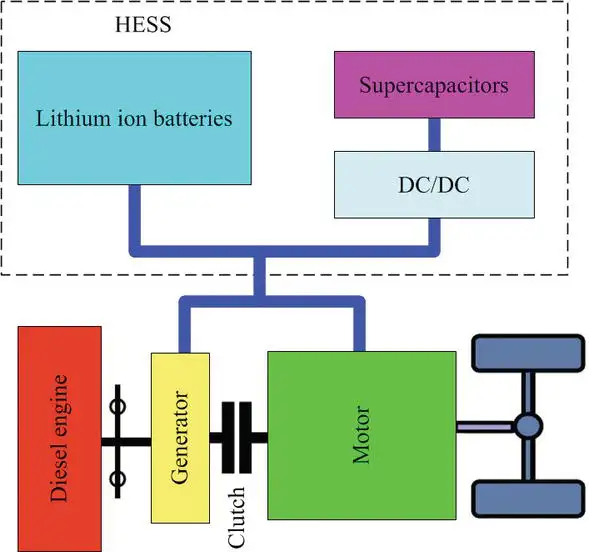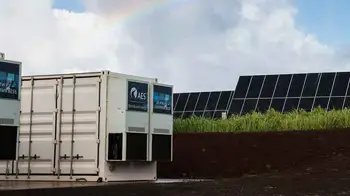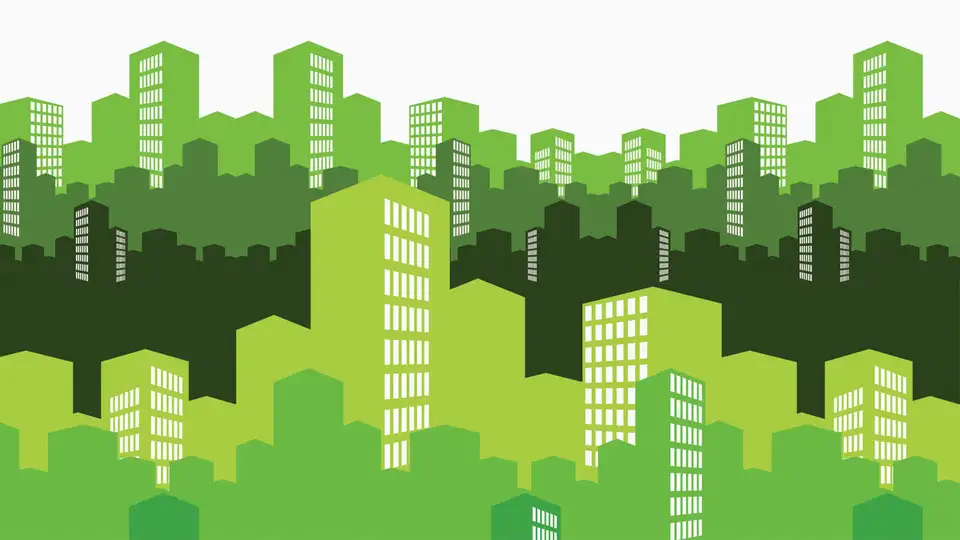Hybrid Energy Storage System Explained

Battery Energy Storage Testing and Maintenance for Solar PV Systems
Our customized live online or in‑person group training can be delivered to your staff at your location.

- Live Online
- 12 hours Instructor-led
- Group Training Available
Download Our OSHA 3075 Fact Sheet – Understanding Electrical Hazards in the Workplace

- Learn the effects of electric current on the human body
- Understand OSHA safety standards and protective devices
- Discover essential lockout/tagout and grounding practices
A hybrid energy storage system combines batteries, supercapacitors, and other technologies to optimize electricity supply, integrate renewable energy, and enhance grid stability while balancing rapid response with long-duration needs for efficiency and reliability.
What is a Hybrid Energy Storage System?
A hybrid energy storage system (HESS) integrates various storage technologies to deliver both high power and long-duration capacity, ensuring reliable energy use.
✅ Optimizes grid stability and renewable energy integration
✅ Provides fast response and long-term electricity supply
✅ Increases efficiency, flexibility, and storage system reliability
Energy Storage Systems Training
Why a Hybrid Energy Storage System Matters
The power grid faces challenges from the increasing penetration of renewable energy sources and growing energy demand. A single storage technology cannot always meet these diverse requirements. Lithium-ion batteries, for example, offer excellent energy density but degrade under frequent cycling, while supercapacitors excel at fast response yet lack long-duration capacity. To understand how hybrid designs fit into the broader energy landscape, see our overview of energy storage, which explains the essential role storage plays in modern power systems.
A HESS, which combines multiple storage and generation technologies, solves this issue by distributing the workload. They are especially valuable in remote regions where access to the grid is limited. With rising fossil fuel costs and the urgency of reducing carbon emissions, hybrid systems are positioned as a practical and cost-effective solution for resilient power delivery.
Technology Combinations
Different hybrid designs are tailored to specific needs, each offering distinct advantages:
-
Battery + Supercapacitor: Batteries provide steady, long-duration power, while supercapacitors manage sudden surges and fast transients. This pairing is common in electric vehicles and renewable smoothing.
-
Battery + Flow Battery: Flow batteries offer scalability and long cycle life, but a slower response. Adding conventional batteries provides faster reaction and flexible operation at the grid scale.
-
Battery + Hydrogen Storage: Batteries handle short-term demand, while hydrogen storage supplies seasonal or long-duration backup. Projects in Europe and Asia demonstrate how this design stabilizes microgrids during extended periods of renewable energy shortfalls.
These combinations demonstrate how system designers pair technologies to overcome the limitations of any single option, thereby creating storage architectures that are efficient, durable, and adaptable. Since batteries remain the backbone of most hybrid solutions, our detailed guide on battery energy storage systems explores their performance, applications, and integration with other technologies.
Sign Up for Electricity Forum’s Energy Storage Newsletter
Stay informed with our FREE Energy Storage Newsletter — get the latest news, breakthrough technologies, and expert insights, delivered straight to your inbox.
Performance and Comparisons
| Storage Type | Energy Density (Wh/kg) | Power Density (W/kg) | Efficiency (%) | Cycle Life (cycles) |
|---|---|---|---|---|
| Lithium-ion Battery | 100–250 | 250–340 | 90–95 | 2,000–7,000 |
| Supercapacitor | 5–10 | 1,000–10,000 | 95–98 | 100,000+ |
| Flow Battery | 20–50 | 50–150 | 65–85 | 10,000–20,000 |
| Hydrogen Storage | 33–39 (per kg H2) | Variable | 30–50 | Very high |
By combining technologies, for example, pairing the high energy density of lithium-ion with the rapid responsiveness of supercapacitors, hybrid systems overcome the weaknesses of individual storage methods. Capacitors often complement batteries in hybrid setups, and our article on the capacitor energy storage formula explains how stored electrical charges contribute to fast-response performance.
Control and Optimization
The effectiveness of a hybrid energy storage system depends heavily on its control strategy. Passive hybrids, which directly connect different technologies, are simple but limited in flexibility. Semi-active systems incorporate additional control electronics, whereas fully active systems utilize advanced converters and controllers to optimize energy sharing.
Modern hybrid energy storage systems often employ intelligent algorithms to determine which technology should supply power at any given time. For instance, supercapacitors might be assigned to absorb short bursts during peak loads, while batteries deliver steady output. Some systems now utilize model predictive control or machine learning to optimize efficiency and extend lifespan, thereby ensuring the optimal balance between components. For large-scale, long-duration applications, many hybrid models incorporate compressed air energy storage, which provides substantial capacity for balancing electricity supply and demand.
Challenges and Limitations
Despite their advantages, hybrid energy storage systems face barriers that slow wider adoption. Costs remain high due to the need for multiple technologies and a complex control infrastructure. Integration challenges, such as mismatched lifespans and varying maintenance requirements, also add difficulty.
There are also regulatory and safety concerns. Different storage technologies have varying standards for installation, monitoring, and disposal, which complicates compliance. While hybrids can reduce reliance on fossil fuels, they must also overcome issues of scaling, degradation, and long-term system management before becoming universal solutions. A hybrid system also supports broader grid reliability, as described in our discussion of energy storage and the grid, where storage solutions help stabilize voltage and frequency.
One of the main advantages hybrid energy storage systems offer is their ability to combine multiple energy storage technologies into a single platform, creating flexible and resilient energy storage solutions. By integrating batteries with supercapacitors, flow batteries, or hydrogen storage, a hybrid energy storage system can provide both rapid response for short-term fluctuations and capacity for long-term energy needs. This dual capability makes hybrid systems especially valuable for modern grids that must balance daily demand swings with seasonal renewable variability, ensuring efficiency, stability, and reliability across diverse applications.
Future Trends
The future of hybrid energy storage is tied to ongoing innovation. Research is advancing in new battery chemistries, such as solid-state designs, and improved power electronics that reduce conversion losses. Intelligent, AI-driven control systems are emerging to fine-tune hybrid operations in real time. Hydrogen is another promising element in hybrid configurations, and our page on hydrogen energy storage highlights its potential for seasonal and long-duration backup.
In addition, the range of hybrid combinations is expanding. Beyond batteries and supercapacitors, researchers are exploring combinations with thermal storage, compressed air, and even next-generation hydrogen systems. Integration with smart grids promises more dynamic management, enabling hybrid systems to play a crucial role in reducing emissions while delivering affordable and reliable energy.
Real-World Applications
Hybrid energy storage systems are already proving their value in practice. Microgrids in island communities and remote villages rely on solar, batteries, and hydrogen storage to ensure continuous power. Public transit systems, such as electric buses, use battery–supercapacitor hybrids to capture regenerative braking and support acceleration. On a larger scale, utility projects in Germany and China demonstrate how hybrid systems can stabilize national grids while accommodating high levels of renewable energy penetration.
Test Your Knowledge About Energy Storage!
Think you know Energy Storage? Take our quick, interactive quiz and test your knowledge in minutes.
- Instantly see your results and score
- Identify strengths and areas for improvement
- Challenge yourself on real-world electrical topics
Hybrid energy storage systems offer the flexibility, resilience, and efficiency necessary to meet the challenges of modern energy demands. By combining the complementary strengths of different technologies, they ensure that renewable energy can be integrated at scale without sacrificing reliability. As innovations in control, design, and materials continue, hybrids will become central to the transition toward a cleaner and more sustainable energy future. To explore the future of the industry, review our insights on growth in utility-scale energy storage, which demonstrate how hybrid systems are shaping the integration of large-scale renewable energy sources.
Related Articles








